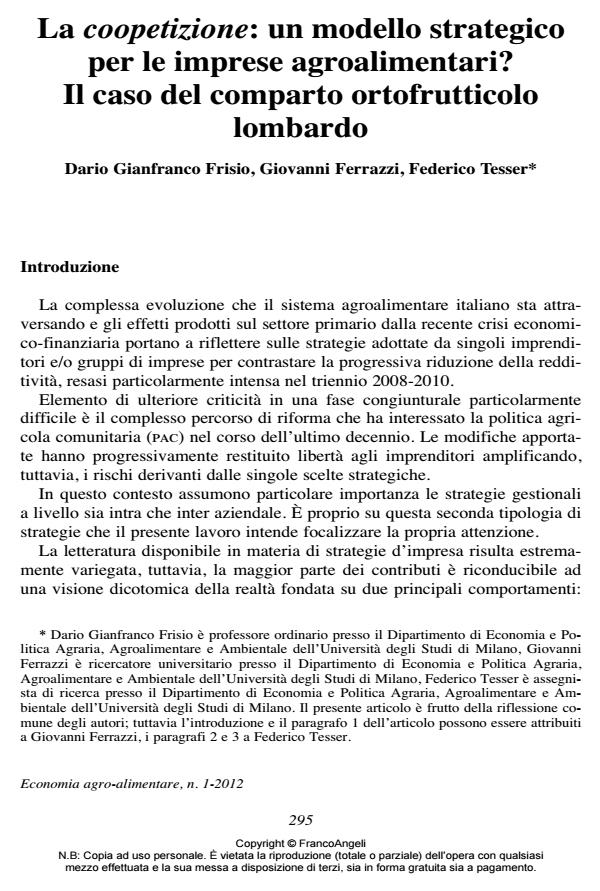La coopetizione: un modello strategico per le imprese agroalimentari? Il caso del comparto ortofrutticolo lombardo
Titolo Rivista ECONOMIA AGRO-ALIMENTARE
Autori/Curatori Dario Gianfranco Frisio, Giovanni Ferrazzi, Federico Tesser
Anno di pubblicazione 2012 Fascicolo 2012/1
Lingua Italiano Numero pagine 23 P. 295-317 Dimensione file 711 KB
DOI 10.3280/ECAG2012-001014
Il DOI è il codice a barre della proprietà intellettuale: per saperne di più
clicca qui
Qui sotto puoi vedere in anteprima la prima pagina di questo articolo.
Se questo articolo ti interessa, lo puoi acquistare (e scaricare in formato pdf) seguendo le facili indicazioni per acquistare il download credit. Acquista Download Credits per scaricare questo Articolo in formato PDF

FrancoAngeli è membro della Publishers International Linking Association, Inc (PILA)associazione indipendente e non profit per facilitare (attraverso i servizi tecnologici implementati da CrossRef.org) l’accesso degli studiosi ai contenuti digitali nelle pubblicazioni professionali e scientifiche
The presence of hybrids in the agribusiness system as well as the growing interest showed by the economic side of businesses prompt speculation about the present role of such coordinating structures in agribusiness. Numerous studies have addressed separately on competition and on cooperation. In recent years this dichotomic perspective of reality was joined by an interpretation focused on the study of new strategic behaviours characterized by the simultaneous presence of cooperative and competitive attitudes, indicated by the neologism coopetition. Aim of this work is to verify the presence of coopetitive behaviours in the horticultural sector, chosen as a case study and to define the driving forces of these strategic models.
Parole chiave:Coopetition, hybrids, strategies
Jel codes:L22, L23, Q12, Q13
- What Factors Encourage Intrafamily Farm Succession in Mountain Areas? Daniele Cavicchioli, Danilo Bertoni, Federico Tesser, Dario Gianfranco Frisio, in Mountain Research and Development /2015 pp.152
DOI: 10.1659/MRD-JOURNAL-D-14-00107.1
Dario Gianfranco Frisio, Giovanni Ferrazzi, Federico Tesser, La coopetizione: un modello strategico per le imprese agroalimentari? Il caso del comparto ortofrutticolo lombardo in "ECONOMIA AGRO-ALIMENTARE" 1/2012, pp 295-317, DOI: 10.3280/ECAG2012-001014